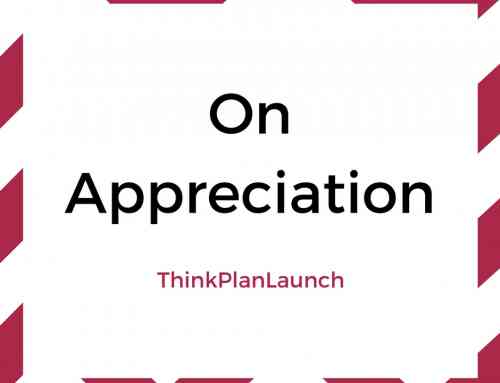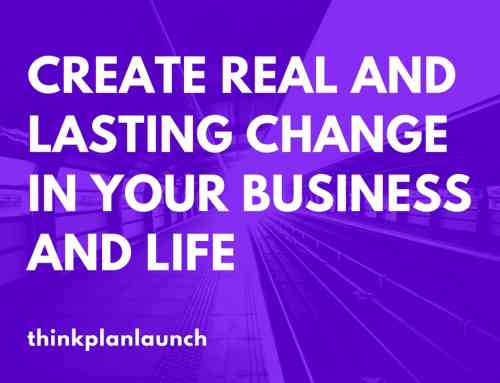Table of Contents
Intrinsic Motivation and Driving Forces
Intrinsic motivation is the primary internal force that causes a person to act. It’s at the core of a person’s thoughts, decisions, and actions. Understanding intrinsic motivation is critical to maximizing your own productivity. Furthermore, understanding the intrinsic motivation of others is crucial to motivating and leading people.
We used to refer to intrinsic motivation factors as “motivators” (and before that “values”). We now refer to intrinsic motivation factors as Driving Forces. The twelve Driving Forces provide a complete, accurate measure of a person’s intrinsic and extrinsic motivation.
When we understand a person’s Driving Forces, we understand WHY they do things. Whereas DISC measures a person’s behavioral style – helping us understand HOW they do things (communicate, interact, make decisions, organize their work, etc.) – Driving Forces goes deeper.
Driving Forces gives us the reasoning behind a person’s working style, career goals, and personal interests. It helps us understand why some people view others as illogical, and vice versa. It gives us a clear window into a person’s priorities, passions, and strengths.
In turn, this allows us to predict job fit and performance with a very high degree of accuracy. It also gives us the exact information needed to motivate someone for their reasons (not ours, which don’t matter to them). It catalyzes a higher level of collaboration and communication across teams. It gives us the ability to help other people the way they want to be helped.
Driving Forces has always been one of my favorite sciences for all of these reasons. It touches at the core of who we are as individuals, and sheds light on our unique dreams – many of which go back to childhood.
You will find people are always working to fulfill their top Driving Forces. If their work does not bring them this fulfillment, expect them to look for it outside of work – perhaps in a hobby, or extracurricular activity.
Additionally, people who are not fulfilling their core Driving Forces at work are at high risk for moving on, since their job is reduced to nothing more than a mere financial transaction – punching a clock and collecting a paycheck.
High Altruistic (High Social)
We may sometimes call the High Altruistic person a High Social. This is because the High Altruistic person is one who scores high on the Social scale.
Key Traits
The High Altruistic person is driven by a need to benefit others. They are generous in providing their talent, time, and other resources in order to help other people. Most of the time, they expect little to nothing in return. Simply being of service to others is their core purpose, not extracting a personal benefit in reciprocation.
Someone who is High Altruistic tends to be good at noticing when people are in need, when they require support, or if someone is struggling. They “tune in” to these things more naturally than others and are more likely to offer their guidance, support, or find a way to help the person. In some instances, they will even act to their own detriment in order to support others.
At Redline
The main danger the High Altruistic person poses is to themselves. Because they are so passionate about helping others, they may often put themselves in a bad position or under-perform as a result of their outward focus. They also tend to “absorb” the emotions and feelings of the people around them, so if those emotions are negative they can also sink into a less productive state of mind.
The High Altruistic’s generally positive attitude also makes them prone to entering into relationships that are one-way, in which they are providing most or all of the benefit to the other person without getting anything of quality in return. However, these negative factors can often be tempered by developing high emotional intelligence.
Stress Factors
The High Altruistic person suffers when forced to focus too much on bottom line results and numbers. They are more driven by helping people and can get turned off if things are made to seem too mechanical or impersonal. They will get upset when decisions are made that negatively affect the people they work with, when unfair working conditions are present, or when some form of inequality is present in their environment.
Communication Insights
Helping, giving, supporting. These are the big things that the High Altruistic person is looking for in life and work. Explain how taking certain actions will help other members of the team, provide them with support, and allow them to realize their potential. Show how taking certain actions will decrease pain and increase happiness for all involved.
As with any of the Driving Forces, it’s the way you frame your communication that matters – such that the person receiving it understands it in terms of what matters to them, not you. While the High Altruistic person can sometimes be so focused on others that they neglect their individual responsibilities, realize they are somewhat rare gems who bring a sense of wholeness, safety, and comfort to the workplace – factors that companies like Google have discovered are critical for success.
Management Insights
When managing someone who is a High Altruistic, be sure to remind them how accomplishing individual responsibilities will help others. “By completing task A, then these other people will be able to more easily do their jobs. Their stress will be reduced.” Put them in a position to help and support others on the team where appropriate.
Ask them questions to draw out where they feel others could use some help, along with ideas about how they (individually, and as a company) can provide it. If your company is involved in any charity events or donations, consider involving your High Altruistic employees in the process. They will love participating and make such events more memorable and better executed than those who score lower on the Social spectrum.
High Intentional (Low Social)
We may sometimes call the High Intentional person a Low Social. This is because the High Intentional person is one who scores low on the Social scale.
Key Traits
The High Intentional person is driven to help others for specific reasons, not just for the sake of providing support. This may sound insensitive in comparison to the generosity of the High Altruistic, but of course nothing is quite so black and white. The High Intentional person will better stay focused on their assigned tasks and still provide support where required; they simply will not make it their personal mission to support or develop others like the High Altruistic will.
The High Intentional tends to see themselves as a “rational” decision-maker, leaving most emotion out of business decisions. The same emotions that will trip up a High Altruistic’s productivity won’t phase the High Intentional – they will keep chugging along at full steam regardless of performance/emotions/feelings of the people around them. The High Intentional will still help to develop others, too, but typically only if there is an opportunity for future return.
At Redline
The High Intentional has the opposite problem of the High Altruistic. They can become so self-absorbed that they cause damage to others, and they often do not realize they are doing this. This is not the same as being “selfish,” but does have some overlap.
The High Intentional sometimes will not engage with others unless there is a clear benefit to themselves, creating win/lose situations for the pair to the disadvantage of the other person. They may also see people as objects – as tools, or opportunities to accomplish something – than as unique, individual human beings who deserve love, attention, and respect.
Stress Factors
The High Intentional will struggle when asked to put time, money, or resources into something where there is little personal benefit to be obtained. They struggle when working with others who let emotion influence their decisions, and when too much emphasis is placed on others’ feelings or emotions.
They especially can’t stand working in an environment where people are rewarded more or less equally in spite of individual contributions. The High Intentional simply has a different concept of what’s fair than the High Altruistic. Neither paradigm is “right” or “wrong.” They each have rational logic behind them. Each simply stem from two different sets of core, intrinsic motivators.
Communication Insights
Personal benefit, usefulness, hard work. These are the things that matter to the High Intentional individual. Every conversational with someone very high in the Intentional driving force should begin with an explanation of how taking a certain action will benefit them personally. Discussion should be focused on how their hard work will lead to results, and highlight useful things they can leverage in their environment, including other people.
Remember: the High Intentional is not a purely selfish or bad person by nature. It’s easy to arrive at this conclusion when comparing the High Intentional to the High Altruistic. In fact, a person’s core driving forces only address what really turns them on and gets them working. It does not address their core values or beliefs about other people. In fact, the High Intentional who is also very emotionally intelligent may ultimately present as more selfless and helpful than the High Social who scores low in emotional intelligence.
Management Insights
The High Intentional needs a manager who keeps the conversation focused on them. The High Intentional’s manager should explain clearly how their individual contributions will lead to personal gain, and how they can compete for certain rewards or recognition in the workplace. Strategies should be described wherein the High Intentional can use others as resources and reach success through “free enterprise.”
When a manager taps into the potential of the High Intentional properly, they will work incredibly hard and focus on all the right things required to succeed, advancing both their goals individually and those of the business. It can help to have clearly defined responsibilities and boundaries for the High Intentional to ensure they focus on mutually beneficial company goals.
Conclusion
The High Altruistic / High Social person needs to help others to feel fulfilled and motivated in their life and work. By contrast, the High Intentional/ Low Social person needs independence, reward for individual contributions, and a clear understanding of how they will personally gain or benefit from every action they take.
Like any driving force, it’s important to understand where your people (and where you!) stand with this factor. Your approach to your own work, as well as motivating your employees, will change completely depending on where someone lies on the Social scale.




Leave A Comment